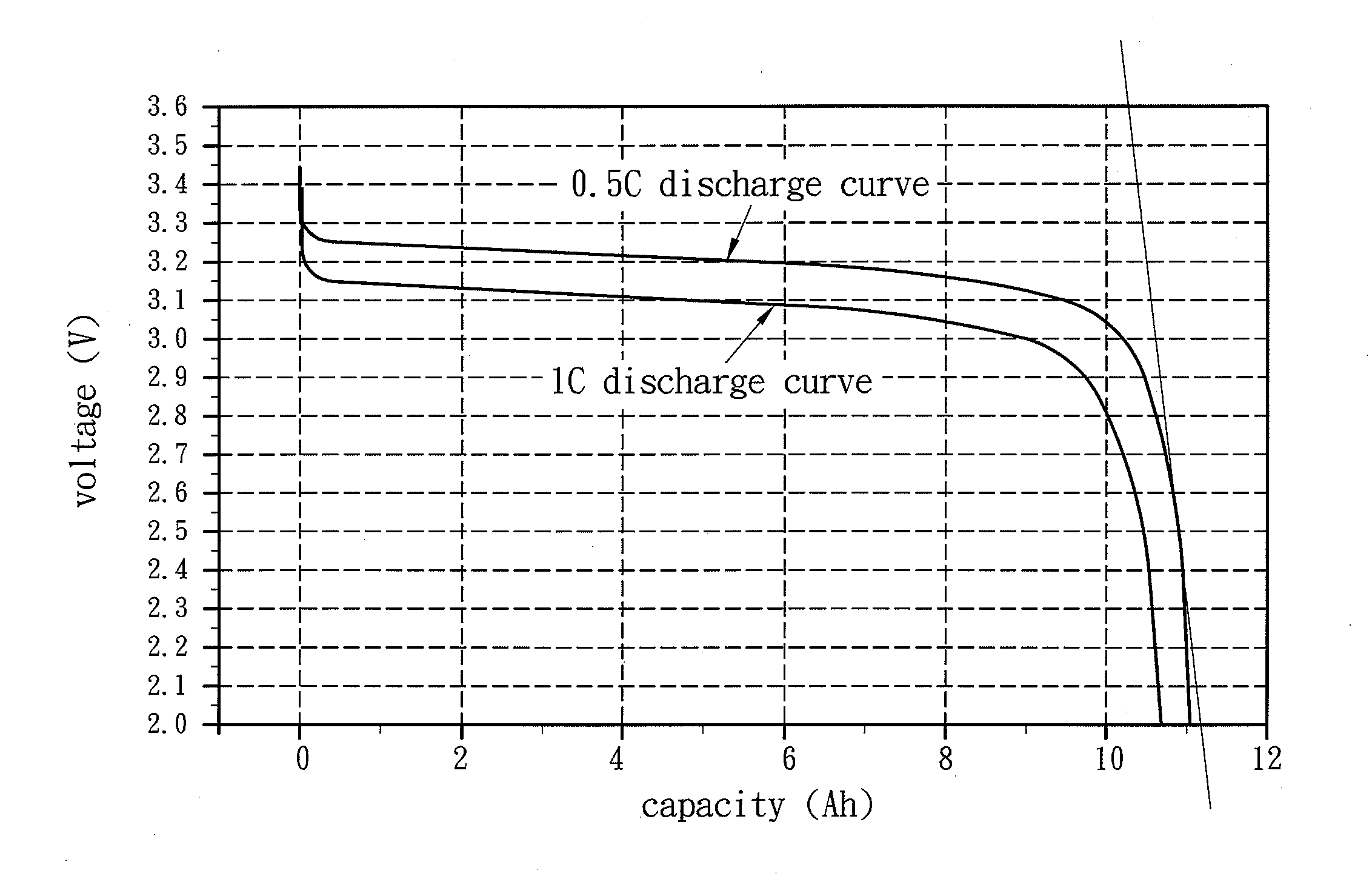Method for grouping lithium secondary battery packs
a secondary battery and lithium battery technology, applied in the field of secondary battery technology, can solve the problems of high value and high cost, self-discharge rate, difficult evaluation, etc., and achieve the effect of stable open-circuit voltage of the battery, easy short circuit when in operation, and battery capacity
- Summary
- Abstract
- Description
- Claims
- Application Information
AI Technical Summary
Benefits of technology
Problems solved by technology
Method used
Image
Examples
embodiment i
[0036]The Type 11585135Fe lithium iron phosphate battery is a product of our company and has a nominal voltage of 3.2V and a rated capacity of 10 Ah. The Type 11585135Fe lithium iron phosphate batteries are to be assembled into a plurality of 1P-12S battery packs. According to the method of the present invention, the batteries are processed with the following steps:
[0037]Step (1): charging and discharging the batteries for two cycles with a charge / discharge current of 0.5 C5, recording the last discharge capacity C0, and determining the batteries with C0≧10 Ah to be eligible batteries;
[0038]Step (2): discharging continuously the eligible batteries of Step (1) with a small discharge current of 0.2 C5 to a discharge cut-off voltage of 2.0V to make the batteries in a power empty state;
[0039]Step (3): storing the batteries processed in Step (2) at a room temperature for 24 hours, recording the battery voltage V1 of each of the batteries after being stored, then storing the batteries at ...
embodiment ii
[0048]The Type 130125155Fe lithium iron phosphate battery is a product of our company and has a nominal voltage of 3.2V and a rated capacity of 20 Ah. The Type 130125155Fe lithium iron phosphate batteries are to be assembled into a plurality of 1P-8S battery packs. According to the method of the present invention, the batteries are processed with the following steps:
[0049]Step (1): charging and discharging the batteries for one cycle with a charge / discharge current of 0.5 C5, recording the last discharge capacity C0, and determining the batteries with C0≧20 Ah to be eligible batteries;
[0050]Step (2): discharging continuously the eligible batteries of Step (1) with a small discharge current of 0.2 C5 to a discharge cut-off voltage of 2.0V;
[0051]Step (3): charging the batteries with a charge current of 0.2 C5 for 12 minutes to a low-charged state (SOC 4%);
[0052]Step (4): storing the batteries processed in Step (3) at a room temperature for 12 hours, recording the battery voltage V1 of...
embodiment iii
[0061]The Type 11065145Fe lithium iron phosphate battery is a product of our company and has a stander voltage of 3.2V and a rated capacity of 9 Ah. The Type 11065145Fe lithium iron phosphate batteries are to be assembled into a plurality of 1P-8S battery packs. According to the method of the present invention, the batteries are processed with the following steps:
[0062]Step (1): charging and discharging the batteries for two cycles with a charge / discharge current of 0.5 C5, recording the discharge capacity C0 of the first cycle, and determining the batteries with C0≧9 Ah to be eligible batteries; discharging the batteries with a constant current of 0.5 C5 for 115.2 minutes in the second cycle to release 96% electricity (SOC 4%) and make the batteries in a low-charged state;
[0063]Step (2): storing the batteries of SOC 4% processed in Step (1) at a room temperature for 12 hours, recording the battery voltage V1 of each of the batteries after being stored, then storing the batteries at...
PUM
| Property | Measurement | Unit |
|---|---|---|
| temperature | aaaaa | aaaaa |
| temperature | aaaaa | aaaaa |
| charge cut-off voltage Vc | aaaaa | aaaaa |
Abstract
Description
Claims
Application Information
 Login to View More
Login to View More - R&D
- Intellectual Property
- Life Sciences
- Materials
- Tech Scout
- Unparalleled Data Quality
- Higher Quality Content
- 60% Fewer Hallucinations
Browse by: Latest US Patents, China's latest patents, Technical Efficacy Thesaurus, Application Domain, Technology Topic, Popular Technical Reports.
© 2025 PatSnap. All rights reserved.Legal|Privacy policy|Modern Slavery Act Transparency Statement|Sitemap|About US| Contact US: help@patsnap.com

